As Vortex’s entry level rangefinder, the Impact 850 outperforms its price point.
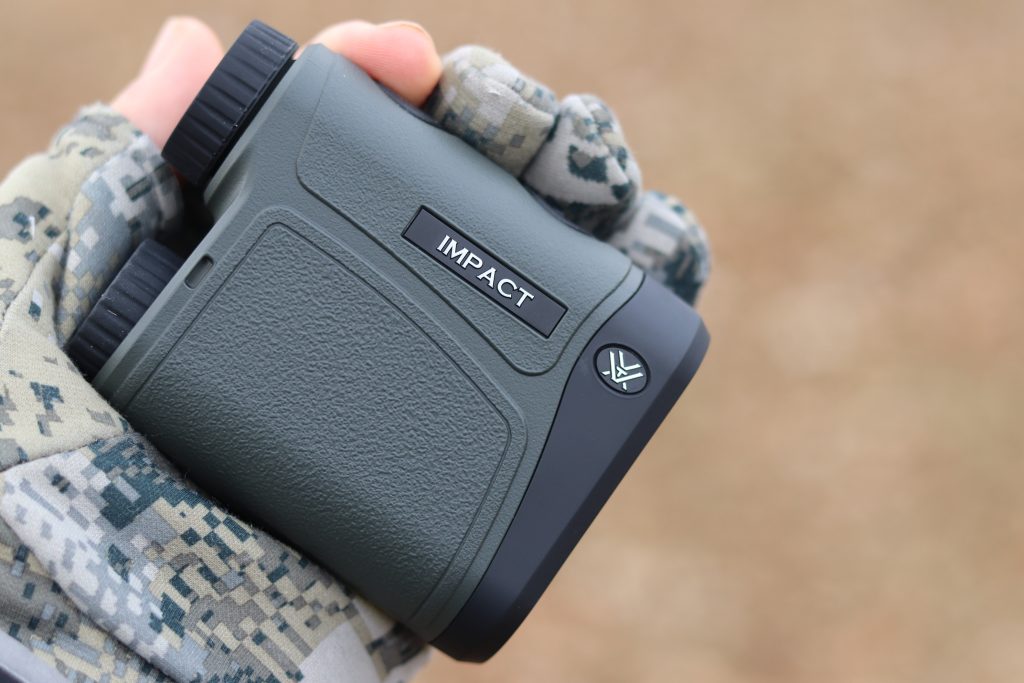
Testing
As someone who does a variety of hunting, I look for diversity in my gear. I want equipment that’s going to function whether it’s spring or fall, archery season or gun season, and good conditions or poor. When it comes to a rangefinder, I’ll be looking for optics that can function for bowhunting deer, shotgun hunting turkey, and rifle hunting elk.
For the Vortex Impact 850, I took it on an elk hunt and turkey hunt in South Dakota to see how it’d function in completely different scenarios. For the elk, I’d be in the mountains and needing measurements out to 500 yards. For the turkey, I’d be in close quarters of creek bottoms where most of the action is in low light.
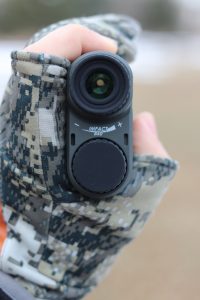 SPECS:
SPECS:
- Price | $270
- Range Reflective | 10-850 yards
- Range Deer | 10-400 yards
- Accuracy | +/- 1 yard @ 100 yards
- Max Angle Reading | +/- 60 degrees
- Magnification | 6x
- Objective Lens Diameter | 20 mm
- Eye Relief | 15 mm
- Length | 3.77 inches
- Width | 2.95 inches
- Weight | 5.5 ounces
What to Like
Immediately out of the box you’ll notice that this rangefinder is small… almost too small. I’m someone who usually has to squeeze into XL gloves, and holding his rangefinder has my pinky hanging off the front of it when my pointer is on the “measure” button. The specs confirm the Impact’s small stature, with many rangefinders being closer to 4 inches and over 6 ounces. For most, this will prove to be an asset.
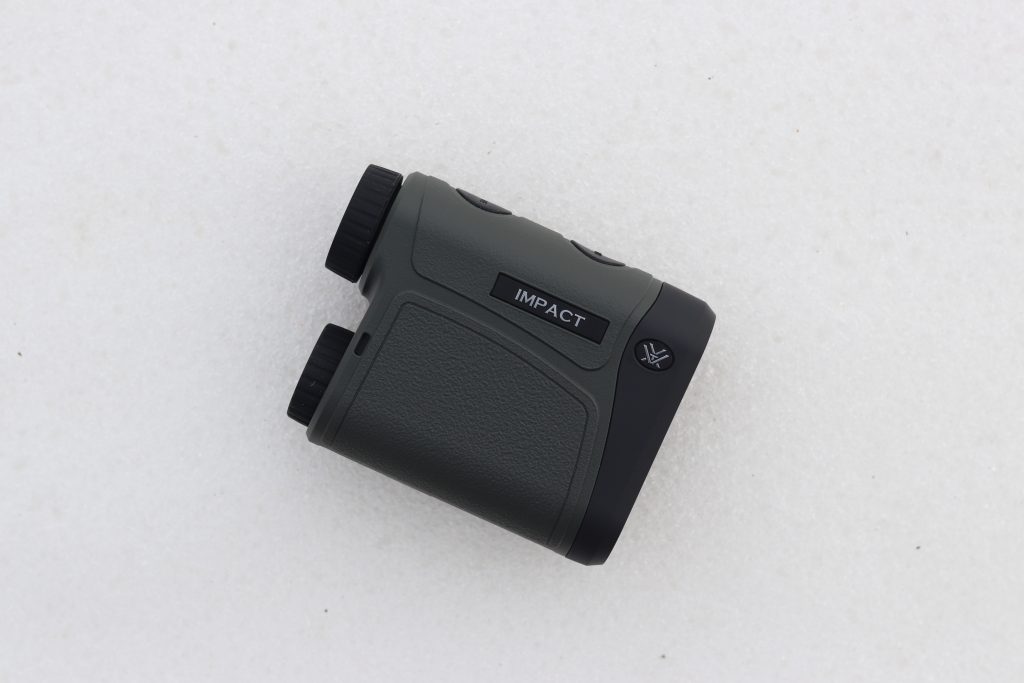 Sticking with the exterior, the rangefinder has a finish that is slick enough to go in and out of your pocket with ease, yet has an uneven surface that provides some extra grip. This can be overlooked on some rangefinders, where you’re regularly handling them in awkward positions, unlike binoculars or spotting scopes.
Sticking with the exterior, the rangefinder has a finish that is slick enough to go in and out of your pocket with ease, yet has an uneven surface that provides some extra grip. This can be overlooked on some rangefinders, where you’re regularly handling them in awkward positions, unlike binoculars or spotting scopes.
I also like the battery housing, which I’ve noticed to be an imperfect design on similarly priced rangefinders.
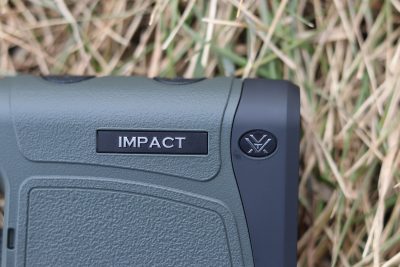 Two Modes:
Two Modes:
The Impact 850 offers two modes. The default mode, which the majority of users will opt for, is the Horizonal Component Distance mode. While in HCD, the rangefinder uses the line of sight yardage and angle to calculate the adjusted distance. This is helpful when shooting out to 400 yards with slopes less than 30 degrees. The second mode is the Line of Sight mode, which displays the line of sight yardage and angle separately, allowing you to figure out the ballistic correction on your own. This is helpful when shooting out too 800 yards with slopes greater than 800 yards.
The book explains both modes very clearly, which is helpful if this is your first time using an angle compensating rangefinder. Being that this is considered an entry level optic, that’s great recognition by Vortex to have each described in very digestible terms.
Both modes allow you to use the scan feature, which works flawlessly and reads distances with no hesitation.
For accuracy, Vortex claims that the Impact 850 is +/- 1 yard at 100 yards. From my testing and comparison to other rangefinders, it seems to be as precise as any on the market. It does well with picking up objects, and I have no doubt a deer could be ranged at 400 yards as promised.
Finally, the lenses offer super sharp images. I was pleasantly surprised at this, as most of the time there’s some big quality adjustments when going from looking through binoculars to looking through a rangefinder, but that’s not an issue with these.
What to Dislike
Sadly, the reticle is in black rather than red. Black text does a great job during daylight, but can cause some eye strain in low light situations. However, this is expected for entry-level rangefinders, as almost no one offers red reticles at this price. Knocking it for this would be like going out to eat and ordering a hamburger, but complaining it’s not a steak.
Also, I immediately noticed a distinct rubber smell from the rangefinder. I’m sure this is something that will subside over time, but I’d be hesitant to take it straight from the store to a treestand. While rifle hunters won’t have a problem with this, archery hunters could think twice.
Bottom Line
For a rangefinder south of $300, this is as good as it gets. The Impact 850 is a high functioning accessory, whether you’re rifle hunting or bowhunting. Loaded with features and high-quality glass, I’d recommend this rangefinder to anyone who likes lifetime warranties and economical optics.
For more information about Vortex rangefinders, click here.

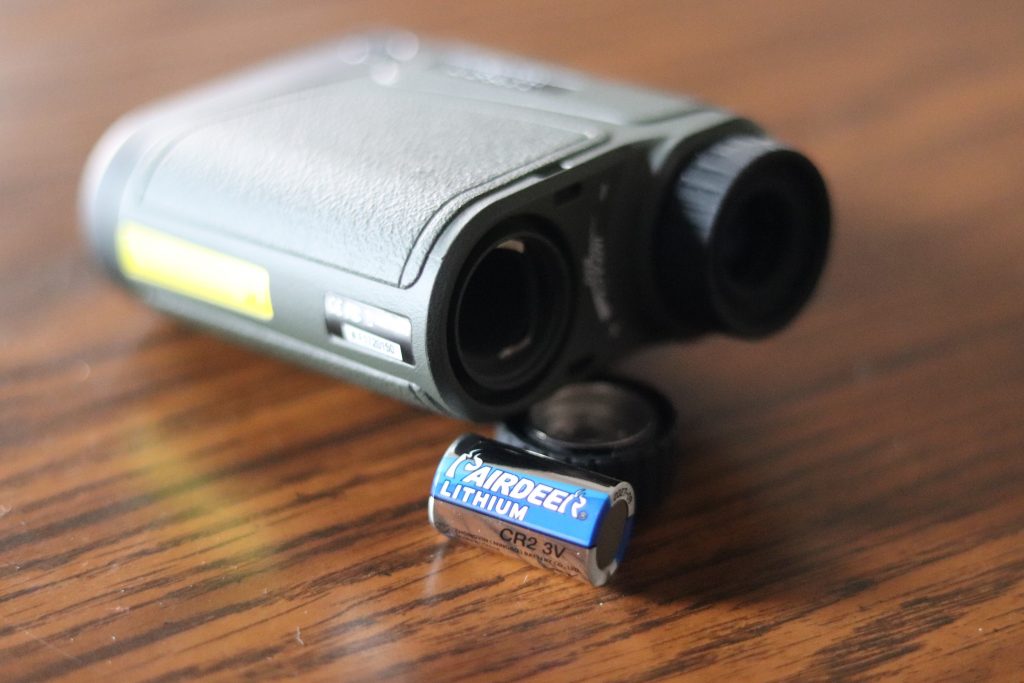
I have 3 range finders, 1 being the Vortex Ranger 1000, a Kilo 2000, and the most recent one I bought, the Leica 2000B. Beam divergence is where it’s at! The vortex ranger 1000 has a divergene of 1.4 mils. My Leica which i paid just north of $600 has a beam divergence of .5 mils. What does all this mean? It means that at 100 yards the lazer beam from my vortex is 5″tall and at 1000 yards it’s over 50″ tall! If your lazer is hititng against a slope it could be much taller and accuracy is even more diminished. The lazer from my Leica is just .5 which means at 100 yds it’s only 1.8″ tall and at 1000 yds is a mere 18″ tall! Thats much more reliable. Note that i’m comparing my Vortex Ranger 1000, and i’m willing to bet that the 850 has an even larger beam if not the same. And for the record, even with my Ranger 1000 the furthest ive been able to range something that i would actually shoot at (not a car or big ol’ road sign which are very reflective) is about 600 yds. Dissapointing for something that says 1000 on it! I would save my money and double down on a Leica!